- By theme
- Jesus
- The many proofs of Christ’s resurrection
- Saint Thomas Aquinas: God gave all the divine proofs we needed to believe
- The surpassing power of Christ's word
- Lewis’s trilemma: a proof of Jesus’s divinity
- God saves: the power of the holy name of Jesus
- Jesus spoke and acted as God's equal
- Jesus' divinity is actually implied in the Koran
- Jesus came at the perfect time of history
- Rabbinical sources testify to Jesus' miracles
- Mary
- The Church
- The Bible
- An enduring prophecy and a series of miraculous events preventing the reconstruction of the Temple
- The authors of the Gospels were either eyewitnesses or close contacts of those eyewitnesses
- Onomastics support the historical reliability of the Gospels
- The New Testament was not altered
- The New Testament is the best-attested manuscript of Antiquity
- The Gospels were written too early after the facts to be legends
- Archaeological finds confirm the reliability of the New Testament
- The criterion of embarrassment proves that the Gospels tell the truth
- The dissimilarity criterion strengthens the case for the historical reliability of the Gospels
- 84 details in Acts verified by historical and archaeological sources
- The unique prophecies that announced the Messiah
- The time of the coming of the Messiah was accurately prophesied
- The prophet Isaiah's ultra accurate description of the Messiah's sufferings
- Daniel's "Son of Man" is a portrait of Christ
- The Apostles
- Saint Peter, prince of the apostles
- Saint John the Apostle: an Evangelist and Theologian who deserves to be better known (d. 100)
- Saint Matthew, apostle, evangelist and martyr (d. 61)
- James the Just, “brother” of the Lord, apostle and martyr (d. 62 AD)
- Saint Matthias replaces Judas as an apostle (d. 63)
- The martyrs
- The protomartyr Saint Stephen (d. 31)
- Polycarp, bishop of Smyrna, disciple of John and martyr (d. 155)
- Justin Martyr: philosopher and apologist (d.165)
- Saint Blandina and the Martyrs of Lyon: the fortitude of faith (177 AD)
- Saint Agatha stops a volcano from destroying the city of Catania (d. 251)
- Saint Lucy of Syracuse, virgin and martyr for Christ (d. 304)
- Saint Boniface propagates Christianity in Germany (d. 754)
- Thomas More: “The king’s good servant, but God’s first”
- The martyrdom of Paul Miki and his companions (d. 1597)
- The martyrs of Angers and Avrillé (1794)
- The Martyrs of Compiègne (1794)
- The Vietnamese martyrs Father Andrew Dung-Lac and his 116 companions (17th-19th centuries)
- He braved torture to atone for his apostasy (d. 1818)
- Blaise Marmoiton: the epic journey of a missionary to New Caledonia (d. 1847)
- The Uganda martyrs: a recurring pattern in the persecution of Christians (1885)
- José Luis Sanchez del Rio, martyred at age 14 for Christ the King (d. 1928)
- Saint Maximilian Kolbe, Knight of the Immaculate (d. 1941)
- The monks
- The Desert Fathers (3rd century)
- Saint Anthony of the Desert, a father of monasticism (d. 356)
- Saint Benedict, father of Western monasticism (d. 550)
- Saint Bruno the Carthusian (d.1101): the miracle of a hidden life
- Blessed Angelo Agostini Mazzinghi: the Carmelite with flowers pouring from his mouth (d. 1438)
- Monk Abel of Valaam's accurate prophecies about Russia (d. 1841)
- The more than 33,000 miracles of Saint Charbel Maklouf (d. 1898)
- Saint Pio of Pietrelcina (d. 1968): How God worked wonders through "a poor brother who prays"
- The surprising death of Father Emmanuel de Floris (d. 1992)
- The prophecies of Saint Paisios of Mount Athos (d. 1994)
- The saints
- Saints Anne and Joachim, parents of the Virgin Mary (19 BC)
- Saint Nazarius, apostle and martyr (d. 68 or 70)
- Ignatius of Antioch: successor of the apostles and witness to the Gospel (d. 117)
- Saint Gregory the Miracle-Worker (d. 270)
- Saint Martin of Tours: patron saint of France, father of monasticism in Gaul, and the first great leader of Western monasticism (d. 397)
- Saint Augustine of Canterbury evangelises England (d. 604)
- Saint Lupus, the bishop who saved his city from the Huns (d. 623)
- Saint Rainerius of Pisa: from musician to merchant to saint (d. 1160)
- Saint Dominic of Guzman (d.1221): an athlete of the faith
- Saint Francis, the poor man of Assisi (d. 1226)
- Saint Anthony of Padua: "everyone’s saint"
- Saint Rose of Viterbo or How prayer can transform the world (d. 1252)
- Saint Simon Stock receives the scapular of Mount Carmel from the hands of the Virgin Mary
- The unusual boat of Saint Basil of Ryazan
- Saint Agnes of Montepulciano's complete God-confidence (d. 1317)
- The extraordinary conversion of Michelina of Pesaro
- Saint Peter Thomas (d. 1366): a steadfast trust in the Virgin Mary
- Saint Rita of Cascia: hoping against all hope
- Saint Catherine of Genoa and the Fire of God's love (d. 1510)
- Saint Anthony Mary Zaccaria, physician of bodies and souls (d. 1539)
- Saint Ignatius of Loyola (d. 1556): "For the greater glory of God"
- Brother Alphonsus Rodríguez, SJ: the "holy porter" (d. 1617)
- Martin de Porres returns to speed up his beatification (d. 1639)
- Virginia Centurione Bracelli: When God is the only goal, all difficulties are overcome (d.1651)
- Saint Marie of the Incarnation, "the Teresa of New France" (d.1672)
- St. Francis di Girolamo's gift of reading hearts and souls (d. 1716)
- Rosa Venerini: moving in the ocean of the Will of God (d. 1728)
- Saint Jeanne-Antide Thouret: heroic perseverance and courage (d. 1826)
- Seraphim of Sarov (1759-1833): the purpose of the Christian life is to acquire the Holy Spirit
- Camille de Soyécourt, filled with divine fortitude (d. 1849)
- Bernadette Soubirous, the shepherdess who saw the Virgin Mary (1858)
- Saint John Vianney (d. 1859): the global fame of a humble village priest
- Gabriel of Our Lady of Sorrows, the "Gardener of the Blessed Virgin" (d. 1862)
- Father Gerin, the holy priest of Grenoble (1863)
- Blessed Francisco Palau y Quer: a lover of the Church (d. 1872)
- Saints Louis and Zelie Martin, the parents of Saint Therese of Lisieux (d. 1894 and 1877)
- The supernatural maturity of Francisco Marto, “contemplative consoler of God” (d. 1919)
- Saint Faustina, apostle of the Divine Mercy (d. 1938)
- Brother Marcel Van (d.19659): a "star has risen in the East"
- Doctors
- The mystics
- Lutgardis of Tongeren and the devotion to the Sacred Heart
- Saint Angela of Foligno (d. 1309) and "Lady Poverty"
- Saint John of the Cross: mystic, reformer, poet, and universal psychologist (+1591)
- Blessed Anne of Jesus: a Carmelite nun with mystical gifts (d.1621)
- Catherine Daniélou: a mystical bride of Christ in Brittany
- Saint Margaret Mary sees the "Heart that so loved mankind"
- Jesus makes Maria Droste zu Vischering the messenger of his Divine Heart (d. 1899)
- Mother Yvonne-Aimée of Jesus' predictions concerning the Second World War (1922)
- Sister Josefa Menendez, apostle of divine mercy (d. 1923)
- Edith Royer (d. 1924) and the Sacred Heart Basilica of Montmartre
- Rozalia Celak, a mystic with a very special mission (d. 1944)
- Visionaries
- Saint Perpetua delivers her brother from Purgatory (203)
- María de Jesús de Ágreda, abbess and friend of the King of Spain
- Discovery of the Virgin Mary's house in Ephesus (1891)
- Sister Benigna Consolata: the "Little Secretary of Merciful Love" (d. 1916)
- Maria Valtorta's visions match data from the Israel Meteorological Service (1943)
- Berthe Petit's prophecies about the two world wars (d. 1943)
- Maria Valtorta saw only one pyramid at Giza in her visions... and she was right! (1944)
- The location of Saint Peter's village seen in a vision before its archaeological discovery (1945)
- The 700 extraordinary visions of the Gospel received by Maria Valtorta (d. 1961)
- The amazing geological accuracy of Maria Valtorta's writings (d. 1961)
- Maria Valtorta's astronomic observations consistent with her dating system
- Discovery of an ancient princely house in Jerusalem, previously revealed to a mystic (d. 1961)
- Mariette Kerbage, the seer of Aleppo (1982)
- The 20,000 icons of Mariette Kerbage (2002)
- The popes
- The great witnesses of the faith
- Saint Augustine's conversion: "Why not this very hour make an end to my uncleanness?" (386)
- Thomas Cajetan (d. 1534): a life in service of the truth
- Madame Acarie, "the servant of the servants of God" (d. 1618)
- Blaise Pascal (d.1662): Biblical prophecies are evidence
- Madame Élisabeth and the sweet smell of virtue (d. 1794)
- Jacinta, 10, offers her suffering to save souls from hell (d. 1920)
- Father Jean-Édouard Lamy: "another Curé of Ars" (d. 1931)
- Christian civilisation
- The depth of Christian spirituality
- John of the Cross' Path to perfect union with God based on his own experience
- The dogma of the Trinity: an increasingly better understood truth
- The incoherent arguments against Christianity
- The "New Pentecost": modern day, spectacular outpouring of the Holy Spirit
- The Christian faith explains the diversity of religions
- Cardinal Pierre de Bérulle (d.1629) on the mystery of the Incarnation
- Christ's interventions in history
- Marian apparitions and interventions
- The Life-giving Font of Constantinople
- Apparition of Our Lady of La Treille in northern France: prophecy and healings (600)
- Our Lady of Virtues saves the city of Rennes in Bretagne (1357)
- Mary stops the plague epidemic at Mount Berico (1426)
- Our Lady of Miracles heals a paralytic in Saronno (1460)
- Cotignac: the first apparitions of the Modern Era (1519)
- Savona: supernatural origin of the devotion to Our Lady of Mercy (1536)
- The Virgin Mary delivers besieged Christians in Cusco, Peru
- The victory of Lepanto and the feast of Our Lady of the Rosary (1571)
- The apparitions to Brother Fiacre (1637)
- The “aldermen's vow”, or the Marian devotion of the people of Lyon (1643)
- Our Lady of Nazareth in Plancoët, Brittany (1644)
- Our Lady of Laghet (1652)
- Saint Joseph’s apparitions in Cotignac, France (1660)
- Heaven confides in a shepherdess of Le Laus (1664-1718)
- Zeitoun, a two-year miracle (1968-1970)
- The Holy Name of Mary and the major victory of Vienna (1683)
- Heaven and earth meet in Colombia: the Las Lajas shrine (1754)
- The five Marian apparitions that traced an "M" over France, and its new pilgrimage route
- A series of Marian apparitions and prophetic messages in Ukraine since the 19th century (1806)
- "Consecrate your parish to the Immaculate Heart of Mary" (1836)
- At La Salette, Mary wept in front of the shepherds (1846)
- Our Lady of Champion, Wisconsin: the first and only approved apparition of Mary in the US (1859)
- Gietrzwald apparitions: heavenly help to a persecuted minority
- The silent apparition of Knock Mhuire in Ireland (1879)
- Mary "Abandoned Mother" appears in a working-class district of Lyon, France (1882)
- The thirty-three apparitions of the Virgin Mary in Beauraing (1932)
- "Our Lady of the Poor" appears eight times in Banneux (1933)
- Fontanelle-Montichiari apparitions of Our Lady "Rosa Mystica" (1947)
- Mary responds to the Vows of the Polish Nation (1956)
- Zeitoun apparitions
- The Virgin Mary comes to France's rescue by appearing at L'Ile Bouchard (1947)
- Maria Esperanza Bianchini and Mary, Mary, Reconciler of Peoples and Nations (1976)
- Luz Amparo and the El Escorial apparitions
- The extraordinary apparitions of Medjugorje and their worldwide impact
- The Virgin Mary prophesied the 1994 Rwandan genocide (1981)
- Our Lady of Soufanieh's apparition and messages to Myrna Nazzour (1982)
- The Virgin Mary heals a teenager, then appears to him dozens of times (1986)
- Seuca, Romania: apparitions and pleas of the Virgin Mary, "Queen of Light" (1995)
- Angels and their manifestations
- Mont Saint-Michel: Heaven watching over France
- The revelation of the hymn Axion Estin by the Archangel Gabriel (982)
- Angels give a supernatural belt to the chaste Thomas Aquinas (1243)
- The constant presence of demons and angels in the life of St Frances of Rome (d. 1440)
- Mother Yvonne-Aimée escapes from prison with the help of an angel (1943)
- Saved by Angels: The Miracle on Highway 6 (2008)
- Exorcisms in the name of Christ
- A wave of charity unique in the world
- Saint Peter Nolasco: a life dedicated to ransoming enslaved Christians (d. 1245)
- Rita of Cascia forgives her husband's murderer (1404)
- Saint Angela Merici: Christ came to serve, not to be served (d. 1540)
- Saint John of God: a life dedicated to the care of the poor, sick and those with mental disorders (d. 1550)
- Saint Camillus de Lellis, reformer of hospital care (c. 1560)
- Blessed Alix Le Clerc, encouraged by the Virgin Mary to found schools (d. 1622)
- Saint Vincent de Paul (d. 1660), apostle of charity
- Marguerite Bourgeoys, Montreal's first teacher (d. 1700)
- Frédéric Ozanam, inventor of the Church's social doctrine (d. 1853)
- Damian of Molokai: a leper for Christ (d. 1889)
- Pier Giorgio Frassati (d.1925): heroic charity
- Saint Dulce of the Poor, the Good Angel of Bahia (d. 1992)
- Mother Teresa of Calcutta (d. 1997): an unshakeable faith
- Heidi Baker: Bringing God's love to the poor and forgotten of the world
- Amazing miracles
- The miracle of liquefaction of the blood of St. Januarius (d. 431)
- The miracles of Saint Anthony of Padua (d. 1231)
- Saint Pius V and the miracle of the Crucifix (1565)
- Saint Philip Neri calls a teenager back to life (1583)
- The resurrection of Jérôme Genin (1623)
- Saint Francis de Sales brings back to life a victim of drowning (1623)
- Saint John Bosco and the promise kept beyond the grave (1839)
- The day the sun danced at Fatima (1917)
- Pius XII and the miracle of the sun at the Vatican (1950)
- When Blessed Charles de Foucauld saved a young carpenter named Charle (2016)
- Reinhard Bonnke: 89 million conversions (d. 2019)
- Miraculous cures
- The royal touch: the divine thaumaturgic gift granted to French and English monarchs (11th-19th centuries)
- With 7,500 cases of unexplained cures, Lourdes is unique in the world (1858-today)
- Our Lady at Pellevoisin: "I am all merciful" (1876)
- Mariam, the "little thing of Jesus": a saint from East to West (d.1878)
- The miraculous healing of Marie Bailly and the conversion of Dr. Alexis Carrel (1902)
- Gemma Galgani: healed to atone for sinners' faults (d. 1903)
- The miraculous cure of Blessed Maria Giuseppina Catanea
- The extraordinary healing of Alice Benlian in the Church of the Holy Cross in Damascus (1983)
- The approved miracle for the canonization of Juan Diego Cuauhtlatoatzin (1990)
- Healed by St Charbel Makhlouf, her scars bleed each month for the benefit of unbelievers (1993)
- The miracle that led to Brother André's canonisation (1999)
- Bruce Van Natta's intestinal regrowth: an irrefutable miracle (2007)
- He had “zero” chance of living: a baby's miraculous recovery (2015)
- Manouchak, operated on by Saint Charbel (2016)
- How Maya was cured from cancer at Saint Charbel's tomb (2018)
- Preserved bodies of the saints
- Dying in the odour of sanctity
- The body of Saint Cecilia found incorrupt (d. 230)
- Saint Claudius of Besançon: a quiet leader, a calm presence, and a strong belief in the value of prayer (d. 699)
- Stanislaus Kostka's burning love for God (d. 1568)
- Saint Germaine of Pibrac: God's little Cinderella (d. 1601)
- Blessed Antonio Franco, bishop and defender of the poor (d. 1626)
- Giuseppina Faro, servant of God and of the poor (d. 1871)
- The incorrupt body of Marie-Louise Nerbollier, the visionary from Diémoz (d. 1910)
- The great exhumation of Saint Charbel (1950)
- Bilocations
- Inedias
- Levitations
- Lacrimations and miraculous images
- Saint Juan Diego's tilma (1531)
- The Rue du Bac apparitions of the Virgin Mary to St. Catherine Labouré (Paris, 1830)
- Mary weeps in Syracuse (1953)
- Teresa Musco (d.1976): salvation through the Cross
- Soufanieh: A flow of oil from an image of the Virgin Mary, and oozing of oil from the face and hands of Myrna Nazzour (1982)
- The Saidnaya icon exudes a wonderful fragrance (1988)
- Our Lady weeps in a bishop's hands (1995)
- Stigmates
- The venerable Lukarda of Oberweimar shares her spiritual riches with her convent (d. 1309)
- Florida Cevoli: a heart engraved with the cross (d. 1767)
- Blessed Maria Grazia Tarallo, mystic and stigmatist (d. 1912)
- Saint Padre Pio: crucified by Love (1918)
- Elena Aiello: "a Eucharistic soul"
- A Holy Triduum with a Syrian mystic, witnessing the sufferings of Christ (1987)
- A Holy Thursday in Soufanieh (2004)
- Eucharistic miracles
- Lanciano: the first and possibly the greatest Eucharistic miracle (750)
- A host came to her: 11-year-old Imelda received Communion and died in ecstasy (1333)
- Faverney's hosts miraculously saved from fire
- A tsunami recedes before the Blessed Sacrament (1906)
- Buenos Aires miraculous host sent to forensic lab, found to be heart muscle (1996)
- Relics
- The Veil of Veronica, known as the Manoppello Image
- For centuries, the Shroud of Turin was the only negative image in the world
- The Holy Tunic of Argenteuil's fascinating history
- Saint Louis (d. 1270) and the relics of the Passion
- The miraculous rescue of the Shroud of Turin (1997)
- A comparative study of the blood present in Christ's relics
- Jews discover the Messiah
- Francis Xavier Samson Libermann, Jewish convert to Catholicism (1824)
- Our Lady of the Miraculous Medal and the conversion of Alphonse Ratisbonne (1842)
- Max Jacob: a liberal gay Jewish artist converts to Catholicism (1909)
- Edith Stein - Saint Benedicta of the Cross: "A daughter of Israel who, during the Nazi persecutions, remained united with faith and love to the Crucified Lord, Jesus Christ, as a Catholic, and to her people as a Jew"
- Patrick Elcabache: a Jew discovers the Messiah after his mother is miraculously cured in the name of Jesus
- Olivier's conversion story: from Pesach to the Christian Easter (2000)
- Cardinal Aron Jean-Marie Lustiger (d. 2007): Chosen by God
- Muslim conversions
- He met Jesus while looking for Muhammad (1990)
- Selma's journey to baptism (1996)
- Soumia, converted to Jesus as she hears Christmas carols (2003)
- How Aïsha, a Muslim convert, found Jesus (2004)
- Amir chooses Christ, at the risk of becoming homeless (2004)
- Souad Brahimi: brought to Jesus by Mary (2012)
- Pursued by God: Khadija's story (2023)
- Buddhist conversions
- Atheist conversions
- The conversion of an executioner during the Terror (1830)
- God woos a poet's heart: the story of Paul Claudel's conversion (1886)
- From agnostic to Catholic Trappist monk (1909)
- Dazzled by God: Madeleine Delbrêl's story (1924)
- C.S. Lewis, the reluctant convert (1931)
- The day André Frossard met Christ in Paris (1935)
- MC Solaar's rapper converts after experiencing Jesus' pains on the cross
- Father Sébastien Brière, converted at Medjugorje (2003)
- Franca Sozzani, the "Pope of fashion" who wanted to meet the Pope (2016)
- Nelly Gillant: from Reiki Master to Disciple of Christ (2018)
- Testimonies of encounters with Christ
- Near-death experiences (NDEs) confirm Catholic doctrine on the Four Last Things
- The NDE of Saint Christina the Astonishing, a source of conversion to Christ (1170)
- Jesus audibly calls Alphonsus Liguori to follow him (1723)
- Blessed Dina Bélanger (d. 1929): loving God and letting Jesus and Mary do their job
- Gabrielle Bossis: He and I
- André Levet's conversion in prison
- Journey between heaven and hell: a "near-death experience" (1971)
- Jesus' message to Myrna Nazzour (1984)
- Alicja Lenczewska: conversations with Jesus (1985)
- Vassula Ryden and the "True Life in God" (1985)
- Nahed Mahmoud Metwalli: from persecutor to persecuted (1987)
- The Bible verse that converted a young Algerian named Elie (2000)
- Invited to the celestial court: the story of Chantal (2017)
- Providential stories
- The superhuman intuition of Saint Pachomius the Great
- Ambrose of Milan finds the bodies of the martyrs Gervasius and Protasius (386)
- Germanus of Auxerre's prophecy about Saint Genevieve's future mission, and protection of the young woman (446)
- Seven golden stars reveal the future location of the Grande Chartreuse Monastery (1132)
- The supernatural reconciliation of the Duke of Aquitaine (1134)
- Saint Zita and the miracle of the cloak (13th c.)
- Joan of Arc: "the most beautiful story in the world"
- John of Capistrano saves the Church and Europe (1456)
- A celestial music comforts Elisabetta Picenardi on her deathbed (d. 1468)
- Gury of Kazan: freed from his prison by a "great light" (1520)
- The strange adventure of Yves Nicolazic (1623)
- Julien Maunoir miraculously learns Breton (1626)
- Pierre de Keriolet: with Mary, one cannot be lost (1636)
- How Korea evangelized itself (18th century)
- A hundred years before it happened, Saint Andrew Bobola predicted that Poland would be back on the map (1819)
- The prophetic poem about John Paul II (1840)
- Don Bosco's angel dog: Grigio (1854)
- The purifying flames of Sophie-Thérèse de Soubiran La Louvière (1861)
- Thérèse of Lisieux saved countless soldiers during the Great War
- Lost for over a century, a Russian icon reappears (1930)
- In 1947, a rosary crusade liberated Austria from the Soviets (1946-1955)
- The discovery of the tomb of Saint Peter in Rome (1949)
- He should have died of hypothermia in Soviet jails (1972)
- God protects a secret agent (1975)
- Flowing lava stops at church doors (1977)
- A protective hand saved John Paul II and led to happy consequences (1981)
- Mary Undoer of Knots: Pope Francis' gift to the world (1986)
- Edmond Fricoteaux's providential discovery of the statue of Our Lady of France (1988)
- The Virgin Mary frees a Vietnamese bishop from prison (1988)
- The miracles of Saint Juliana of Nicomedia (1994)
- Global launch of "Pilgrim Virgins" was made possible by God's Providence (1996)
- The providential finding of the Mary of Nazareth International Center's future site (2000)
- Syrian Monastery shielded from danger multiple times (2011-2020)
- Jesus
- Who are we?
- Make a donation
< Toutes les raisons sont ici !

TOUTES LES RAISONS DE CROIRE
- Jesus
- The many proofs of Christ’s resurrection
- Saint Thomas Aquinas: God gave all the divine proofs we needed to believe
- The surpassing power of Christ's word
- Lewis’s trilemma: a proof of Jesus’s divinity
- God saves: the power of the holy name of Jesus
- Jesus spoke and acted as God's equal
- Jesus' divinity is actually implied in the Koran
- Jesus came at the perfect time of history
- Rabbinical sources testify to Jesus' miracles
- Mary
- The Church
- The Bible
- An enduring prophecy and a series of miraculous events preventing the reconstruction of the Temple
- The authors of the Gospels were either eyewitnesses or close contacts of those eyewitnesses
- Onomastics support the historical reliability of the Gospels
- The New Testament was not altered
- The New Testament is the best-attested manuscript of Antiquity
- The Gospels were written too early after the facts to be legends
- Archaeological finds confirm the reliability of the New Testament
- The criterion of embarrassment proves that the Gospels tell the truth
- The dissimilarity criterion strengthens the case for the historical reliability of the Gospels
- 84 details in Acts verified by historical and archaeological sources
- The unique prophecies that announced the Messiah
- The time of the coming of the Messiah was accurately prophesied
- The prophet Isaiah's ultra accurate description of the Messiah's sufferings
- Daniel's "Son of Man" is a portrait of Christ
- The Apostles
- Saint Peter, prince of the apostles
- Saint John the Apostle: an Evangelist and Theologian who deserves to be better known (d. 100)
- Saint Matthew, apostle, evangelist and martyr (d. 61)
- James the Just, “brother” of the Lord, apostle and martyr (d. 62 AD)
- Saint Matthias replaces Judas as an apostle (d. 63)
- The martyrs
- The protomartyr Saint Stephen (d. 31)
- Polycarp, bishop of Smyrna, disciple of John and martyr (d. 155)
- Justin Martyr: philosopher and apologist (d.165)
- Saint Blandina and the Martyrs of Lyon: the fortitude of faith (177 AD)
- Saint Agatha stops a volcano from destroying the city of Catania (d. 251)
- Saint Lucy of Syracuse, virgin and martyr for Christ (d. 304)
- Saint Boniface propagates Christianity in Germany (d. 754)
- Thomas More: “The king’s good servant, but God’s first”
- The martyrdom of Paul Miki and his companions (d. 1597)
- The martyrs of Angers and Avrillé (1794)
- The Martyrs of Compiègne (1794)
- The Vietnamese martyrs Father Andrew Dung-Lac and his 116 companions (17th-19th centuries)
- He braved torture to atone for his apostasy (d. 1818)
- Blaise Marmoiton: the epic journey of a missionary to New Caledonia (d. 1847)
- The Uganda martyrs: a recurring pattern in the persecution of Christians (1885)
- José Luis Sanchez del Rio, martyred at age 14 for Christ the King (d. 1928)
- Saint Maximilian Kolbe, Knight of the Immaculate (d. 1941)
- The monks
- The Desert Fathers (3rd century)
- Saint Anthony of the Desert, a father of monasticism (d. 356)
- Saint Benedict, father of Western monasticism (d. 550)
- Saint Bruno the Carthusian (d.1101): the miracle of a hidden life
- Blessed Angelo Agostini Mazzinghi: the Carmelite with flowers pouring from his mouth (d. 1438)
- Monk Abel of Valaam's accurate prophecies about Russia (d. 1841)
- The more than 33,000 miracles of Saint Charbel Maklouf (d. 1898)
- Saint Pio of Pietrelcina (d. 1968): How God worked wonders through "a poor brother who prays"
- The surprising death of Father Emmanuel de Floris (d. 1992)
- The prophecies of Saint Paisios of Mount Athos (d. 1994)
- The saints
- Saints Anne and Joachim, parents of the Virgin Mary (19 BC)
- Saint Nazarius, apostle and martyr (d. 68 or 70)
- Ignatius of Antioch: successor of the apostles and witness to the Gospel (d. 117)
- Saint Gregory the Miracle-Worker (d. 270)
- Saint Martin of Tours: patron saint of France, father of monasticism in Gaul, and the first great leader of Western monasticism (d. 397)
- Saint Augustine of Canterbury evangelises England (d. 604)
- Saint Lupus, the bishop who saved his city from the Huns (d. 623)
- Saint Rainerius of Pisa: from musician to merchant to saint (d. 1160)
- Saint Dominic of Guzman (d.1221): an athlete of the faith
- Saint Francis, the poor man of Assisi (d. 1226)
- Saint Anthony of Padua: "everyone’s saint"
- Saint Rose of Viterbo or How prayer can transform the world (d. 1252)
- Saint Simon Stock receives the scapular of Mount Carmel from the hands of the Virgin Mary
- The unusual boat of Saint Basil of Ryazan
- Saint Agnes of Montepulciano's complete God-confidence (d. 1317)
- The extraordinary conversion of Michelina of Pesaro
- Saint Peter Thomas (d. 1366): a steadfast trust in the Virgin Mary
- Saint Rita of Cascia: hoping against all hope
- Saint Catherine of Genoa and the Fire of God's love (d. 1510)
- Saint Anthony Mary Zaccaria, physician of bodies and souls (d. 1539)
- Saint Ignatius of Loyola (d. 1556): "For the greater glory of God"
- Brother Alphonsus Rodríguez, SJ: the "holy porter" (d. 1617)
- Martin de Porres returns to speed up his beatification (d. 1639)
- Virginia Centurione Bracelli: When God is the only goal, all difficulties are overcome (d.1651)
- Saint Marie of the Incarnation, "the Teresa of New France" (d.1672)
- St. Francis di Girolamo's gift of reading hearts and souls (d. 1716)
- Rosa Venerini: moving in the ocean of the Will of God (d. 1728)
- Saint Jeanne-Antide Thouret: heroic perseverance and courage (d. 1826)
- Seraphim of Sarov (1759-1833): the purpose of the Christian life is to acquire the Holy Spirit
- Camille de Soyécourt, filled with divine fortitude (d. 1849)
- Bernadette Soubirous, the shepherdess who saw the Virgin Mary (1858)
- Saint John Vianney (d. 1859): the global fame of a humble village priest
- Gabriel of Our Lady of Sorrows, the "Gardener of the Blessed Virgin" (d. 1862)
- Father Gerin, the holy priest of Grenoble (1863)
- Blessed Francisco Palau y Quer: a lover of the Church (d. 1872)
- Saints Louis and Zelie Martin, the parents of Saint Therese of Lisieux (d. 1894 and 1877)
- The supernatural maturity of Francisco Marto, “contemplative consoler of God” (d. 1919)
- Saint Faustina, apostle of the Divine Mercy (d. 1938)
- Brother Marcel Van (d.19659): a "star has risen in the East"
- Doctors
- The mystics
- Lutgardis of Tongeren and the devotion to the Sacred Heart
- Saint Angela of Foligno (d. 1309) and "Lady Poverty"
- Saint John of the Cross: mystic, reformer, poet, and universal psychologist (+1591)
- Blessed Anne of Jesus: a Carmelite nun with mystical gifts (d.1621)
- Catherine Daniélou: a mystical bride of Christ in Brittany
- Saint Margaret Mary sees the "Heart that so loved mankind"
- Jesus makes Maria Droste zu Vischering the messenger of his Divine Heart (d. 1899)
- Mother Yvonne-Aimée of Jesus' predictions concerning the Second World War (1922)
- Sister Josefa Menendez, apostle of divine mercy (d. 1923)
- Edith Royer (d. 1924) and the Sacred Heart Basilica of Montmartre
- Rozalia Celak, a mystic with a very special mission (d. 1944)
- Visionaries
- Saint Perpetua delivers her brother from Purgatory (203)
- María de Jesús de Ágreda, abbess and friend of the King of Spain
- Discovery of the Virgin Mary's house in Ephesus (1891)
- Sister Benigna Consolata: the "Little Secretary of Merciful Love" (d. 1916)
- Maria Valtorta's visions match data from the Israel Meteorological Service (1943)
- Berthe Petit's prophecies about the two world wars (d. 1943)
- Maria Valtorta saw only one pyramid at Giza in her visions... and she was right! (1944)
- The location of Saint Peter's village seen in a vision before its archaeological discovery (1945)
- The 700 extraordinary visions of the Gospel received by Maria Valtorta (d. 1961)
- The amazing geological accuracy of Maria Valtorta's writings (d. 1961)
- Maria Valtorta's astronomic observations consistent with her dating system
- Discovery of an ancient princely house in Jerusalem, previously revealed to a mystic (d. 1961)
- Mariette Kerbage, the seer of Aleppo (1982)
- The 20,000 icons of Mariette Kerbage (2002)
- The popes
- The great witnesses of the faith
- Saint Augustine's conversion: "Why not this very hour make an end to my uncleanness?" (386)
- Thomas Cajetan (d. 1534): a life in service of the truth
- Madame Acarie, "the servant of the servants of God" (d. 1618)
- Blaise Pascal (d.1662): Biblical prophecies are evidence
- Madame Élisabeth and the sweet smell of virtue (d. 1794)
- Jacinta, 10, offers her suffering to save souls from hell (d. 1920)
- Father Jean-Édouard Lamy: "another Curé of Ars" (d. 1931)
- Christian civilisation
- The depth of Christian spirituality
- John of the Cross' Path to perfect union with God based on his own experience
- The dogma of the Trinity: an increasingly better understood truth
- The incoherent arguments against Christianity
- The "New Pentecost": modern day, spectacular outpouring of the Holy Spirit
- The Christian faith explains the diversity of religions
- Cardinal Pierre de Bérulle (d.1629) on the mystery of the Incarnation
- Christ's interventions in history
- Marian apparitions and interventions
- The Life-giving Font of Constantinople
- Apparition of Our Lady of La Treille in northern France: prophecy and healings (600)
- Our Lady of Virtues saves the city of Rennes in Bretagne (1357)
- Mary stops the plague epidemic at Mount Berico (1426)
- Our Lady of Miracles heals a paralytic in Saronno (1460)
- Cotignac: the first apparitions of the Modern Era (1519)
- Savona: supernatural origin of the devotion to Our Lady of Mercy (1536)
- The Virgin Mary delivers besieged Christians in Cusco, Peru
- The victory of Lepanto and the feast of Our Lady of the Rosary (1571)
- The apparitions to Brother Fiacre (1637)
- The “aldermen's vow”, or the Marian devotion of the people of Lyon (1643)
- Our Lady of Nazareth in Plancoët, Brittany (1644)
- Our Lady of Laghet (1652)
- Saint Joseph’s apparitions in Cotignac, France (1660)
- Heaven confides in a shepherdess of Le Laus (1664-1718)
- Zeitoun, a two-year miracle (1968-1970)
- The Holy Name of Mary and the major victory of Vienna (1683)
- Heaven and earth meet in Colombia: the Las Lajas shrine (1754)
- The five Marian apparitions that traced an "M" over France, and its new pilgrimage route
- A series of Marian apparitions and prophetic messages in Ukraine since the 19th century (1806)
- "Consecrate your parish to the Immaculate Heart of Mary" (1836)
- At La Salette, Mary wept in front of the shepherds (1846)
- Our Lady of Champion, Wisconsin: the first and only approved apparition of Mary in the US (1859)
- Gietrzwald apparitions: heavenly help to a persecuted minority
- The silent apparition of Knock Mhuire in Ireland (1879)
- Mary "Abandoned Mother" appears in a working-class district of Lyon, France (1882)
- The thirty-three apparitions of the Virgin Mary in Beauraing (1932)
- "Our Lady of the Poor" appears eight times in Banneux (1933)
- Fontanelle-Montichiari apparitions of Our Lady "Rosa Mystica" (1947)
- Mary responds to the Vows of the Polish Nation (1956)
- Zeitoun apparitions
- The Virgin Mary comes to France's rescue by appearing at L'Ile Bouchard (1947)
- Maria Esperanza Bianchini and Mary, Mary, Reconciler of Peoples and Nations (1976)
- Luz Amparo and the El Escorial apparitions
- The extraordinary apparitions of Medjugorje and their worldwide impact
- The Virgin Mary prophesied the 1994 Rwandan genocide (1981)
- Our Lady of Soufanieh's apparition and messages to Myrna Nazzour (1982)
- The Virgin Mary heals a teenager, then appears to him dozens of times (1986)
- Seuca, Romania: apparitions and pleas of the Virgin Mary, "Queen of Light" (1995)
- Angels and their manifestations
- Mont Saint-Michel: Heaven watching over France
- The revelation of the hymn Axion Estin by the Archangel Gabriel (982)
- Angels give a supernatural belt to the chaste Thomas Aquinas (1243)
- The constant presence of demons and angels in the life of St Frances of Rome (d. 1440)
- Mother Yvonne-Aimée escapes from prison with the help of an angel (1943)
- Saved by Angels: The Miracle on Highway 6 (2008)
- Exorcisms in the name of Christ
- A wave of charity unique in the world
- Saint Peter Nolasco: a life dedicated to ransoming enslaved Christians (d. 1245)
- Rita of Cascia forgives her husband's murderer (1404)
- Saint Angela Merici: Christ came to serve, not to be served (d. 1540)
- Saint John of God: a life dedicated to the care of the poor, sick and those with mental disorders (d. 1550)
- Saint Camillus de Lellis, reformer of hospital care (c. 1560)
- Blessed Alix Le Clerc, encouraged by the Virgin Mary to found schools (d. 1622)
- Saint Vincent de Paul (d. 1660), apostle of charity
- Marguerite Bourgeoys, Montreal's first teacher (d. 1700)
- Frédéric Ozanam, inventor of the Church's social doctrine (d. 1853)
- Damian of Molokai: a leper for Christ (d. 1889)
- Pier Giorgio Frassati (d.1925): heroic charity
- Saint Dulce of the Poor, the Good Angel of Bahia (d. 1992)
- Mother Teresa of Calcutta (d. 1997): an unshakeable faith
- Heidi Baker: Bringing God's love to the poor and forgotten of the world
- Amazing miracles
- The miracle of liquefaction of the blood of St. Januarius (d. 431)
- The miracles of Saint Anthony of Padua (d. 1231)
- Saint Pius V and the miracle of the Crucifix (1565)
- Saint Philip Neri calls a teenager back to life (1583)
- The resurrection of Jérôme Genin (1623)
- Saint Francis de Sales brings back to life a victim of drowning (1623)
- Saint John Bosco and the promise kept beyond the grave (1839)
- The day the sun danced at Fatima (1917)
- Pius XII and the miracle of the sun at the Vatican (1950)
- When Blessed Charles de Foucauld saved a young carpenter named Charle (2016)
- Reinhard Bonnke: 89 million conversions (d. 2019)
- Miraculous cures
- The royal touch: the divine thaumaturgic gift granted to French and English monarchs (11th-19th centuries)
- With 7,500 cases of unexplained cures, Lourdes is unique in the world (1858-today)
- Our Lady at Pellevoisin: "I am all merciful" (1876)
- Mariam, the "little thing of Jesus": a saint from East to West (d.1878)
- The miraculous healing of Marie Bailly and the conversion of Dr. Alexis Carrel (1902)
- Gemma Galgani: healed to atone for sinners' faults (d. 1903)
- The miraculous cure of Blessed Maria Giuseppina Catanea
- The extraordinary healing of Alice Benlian in the Church of the Holy Cross in Damascus (1983)
- The approved miracle for the canonization of Juan Diego Cuauhtlatoatzin (1990)
- Healed by St Charbel Makhlouf, her scars bleed each month for the benefit of unbelievers (1993)
- The miracle that led to Brother André's canonisation (1999)
- Bruce Van Natta's intestinal regrowth: an irrefutable miracle (2007)
- He had “zero” chance of living: a baby's miraculous recovery (2015)
- Manouchak, operated on by Saint Charbel (2016)
- How Maya was cured from cancer at Saint Charbel's tomb (2018)
- Preserved bodies of the saints
- Dying in the odour of sanctity
- The body of Saint Cecilia found incorrupt (d. 230)
- Saint Claudius of Besançon: a quiet leader, a calm presence, and a strong belief in the value of prayer (d. 699)
- Stanislaus Kostka's burning love for God (d. 1568)
- Saint Germaine of Pibrac: God's little Cinderella (d. 1601)
- Blessed Antonio Franco, bishop and defender of the poor (d. 1626)
- Giuseppina Faro, servant of God and of the poor (d. 1871)
- The incorrupt body of Marie-Louise Nerbollier, the visionary from Diémoz (d. 1910)
- The great exhumation of Saint Charbel (1950)
- Bilocations
- Inedias
- Levitations
- Lacrimations and miraculous images
- Saint Juan Diego's tilma (1531)
- The Rue du Bac apparitions of the Virgin Mary to St. Catherine Labouré (Paris, 1830)
- Mary weeps in Syracuse (1953)
- Teresa Musco (d.1976): salvation through the Cross
- Soufanieh: A flow of oil from an image of the Virgin Mary, and oozing of oil from the face and hands of Myrna Nazzour (1982)
- The Saidnaya icon exudes a wonderful fragrance (1988)
- Our Lady weeps in a bishop's hands (1995)
- Stigmates
- The venerable Lukarda of Oberweimar shares her spiritual riches with her convent (d. 1309)
- Florida Cevoli: a heart engraved with the cross (d. 1767)
- Blessed Maria Grazia Tarallo, mystic and stigmatist (d. 1912)
- Saint Padre Pio: crucified by Love (1918)
- Elena Aiello: "a Eucharistic soul"
- A Holy Triduum with a Syrian mystic, witnessing the sufferings of Christ (1987)
- A Holy Thursday in Soufanieh (2004)
- Eucharistic miracles
- Lanciano: the first and possibly the greatest Eucharistic miracle (750)
- A host came to her: 11-year-old Imelda received Communion and died in ecstasy (1333)
- Faverney's hosts miraculously saved from fire
- A tsunami recedes before the Blessed Sacrament (1906)
- Buenos Aires miraculous host sent to forensic lab, found to be heart muscle (1996)
- Relics
- The Veil of Veronica, known as the Manoppello Image
- For centuries, the Shroud of Turin was the only negative image in the world
- The Holy Tunic of Argenteuil's fascinating history
- Saint Louis (d. 1270) and the relics of the Passion
- The miraculous rescue of the Shroud of Turin (1997)
- A comparative study of the blood present in Christ's relics
- Jews discover the Messiah
- Francis Xavier Samson Libermann, Jewish convert to Catholicism (1824)
- Our Lady of the Miraculous Medal and the conversion of Alphonse Ratisbonne (1842)
- Max Jacob: a liberal gay Jewish artist converts to Catholicism (1909)
- Edith Stein - Saint Benedicta of the Cross: "A daughter of Israel who, during the Nazi persecutions, remained united with faith and love to the Crucified Lord, Jesus Christ, as a Catholic, and to her people as a Jew"
- Patrick Elcabache: a Jew discovers the Messiah after his mother is miraculously cured in the name of Jesus
- Olivier's conversion story: from Pesach to the Christian Easter (2000)
- Cardinal Aron Jean-Marie Lustiger (d. 2007): Chosen by God
- Muslim conversions
- He met Jesus while looking for Muhammad (1990)
- Selma's journey to baptism (1996)
- Soumia, converted to Jesus as she hears Christmas carols (2003)
- How Aïsha, a Muslim convert, found Jesus (2004)
- Amir chooses Christ, at the risk of becoming homeless (2004)
- Souad Brahimi: brought to Jesus by Mary (2012)
- Pursued by God: Khadija's story (2023)
- Buddhist conversions
- Atheist conversions
- The conversion of an executioner during the Terror (1830)
- God woos a poet's heart: the story of Paul Claudel's conversion (1886)
- From agnostic to Catholic Trappist monk (1909)
- Dazzled by God: Madeleine Delbrêl's story (1924)
- C.S. Lewis, the reluctant convert (1931)
- The day André Frossard met Christ in Paris (1935)
- MC Solaar's rapper converts after experiencing Jesus' pains on the cross
- Father Sébastien Brière, converted at Medjugorje (2003)
- Franca Sozzani, the "Pope of fashion" who wanted to meet the Pope (2016)
- Nelly Gillant: from Reiki Master to Disciple of Christ (2018)
- Testimonies of encounters with Christ
- Near-death experiences (NDEs) confirm Catholic doctrine on the Four Last Things
- The NDE of Saint Christina the Astonishing, a source of conversion to Christ (1170)
- Jesus audibly calls Alphonsus Liguori to follow him (1723)
- Blessed Dina Bélanger (d. 1929): loving God and letting Jesus and Mary do their job
- Gabrielle Bossis: He and I
- André Levet's conversion in prison
- Journey between heaven and hell: a "near-death experience" (1971)
- Jesus' message to Myrna Nazzour (1984)
- Alicja Lenczewska: conversations with Jesus (1985)
- Vassula Ryden and the "True Life in God" (1985)
- Nahed Mahmoud Metwalli: from persecutor to persecuted (1987)
- The Bible verse that converted a young Algerian named Elie (2000)
- Invited to the celestial court: the story of Chantal (2017)
- Providential stories
- The superhuman intuition of Saint Pachomius the Great
- Ambrose of Milan finds the bodies of the martyrs Gervasius and Protasius (386)
- Germanus of Auxerre's prophecy about Saint Genevieve's future mission, and protection of the young woman (446)
- Seven golden stars reveal the future location of the Grande Chartreuse Monastery (1132)
- The supernatural reconciliation of the Duke of Aquitaine (1134)
- Saint Zita and the miracle of the cloak (13th c.)
- Joan of Arc: "the most beautiful story in the world"
- John of Capistrano saves the Church and Europe (1456)
- A celestial music comforts Elisabetta Picenardi on her deathbed (d. 1468)
- Gury of Kazan: freed from his prison by a "great light" (1520)
- The strange adventure of Yves Nicolazic (1623)
- Julien Maunoir miraculously learns Breton (1626)
- Pierre de Keriolet: with Mary, one cannot be lost (1636)
- How Korea evangelized itself (18th century)
- A hundred years before it happened, Saint Andrew Bobola predicted that Poland would be back on the map (1819)
- The prophetic poem about John Paul II (1840)
- Don Bosco's angel dog: Grigio (1854)
- The purifying flames of Sophie-Thérèse de Soubiran La Louvière (1861)
- Thérèse of Lisieux saved countless soldiers during the Great War
- Lost for over a century, a Russian icon reappears (1930)
- In 1947, a rosary crusade liberated Austria from the Soviets (1946-1955)
- The discovery of the tomb of Saint Peter in Rome (1949)
- He should have died of hypothermia in Soviet jails (1972)
- God protects a secret agent (1975)
- Flowing lava stops at church doors (1977)
- A protective hand saved John Paul II and led to happy consequences (1981)
- Mary Undoer of Knots: Pope Francis' gift to the world (1986)
- Edmond Fricoteaux's providential discovery of the statue of Our Lady of France (1988)
- The Virgin Mary frees a Vietnamese bishop from prison (1988)
- The miracles of Saint Juliana of Nicomedia (1994)
- Global launch of "Pilgrim Virgins" was made possible by God's Providence (1996)
- The providential finding of the Mary of Nazareth International Center's future site (2000)
- Syrian Monastery shielded from danger multiple times (2011-2020)
Les apparitions et interventions mariales
n°147
Plancoët, Brittany (northwest France)
October 18, 1644
Notre Dame de Nazareth in Plancoët
Before the long series of famous modern Marian apparitions (which began around 1830 with Saint Catherine Labouré and the Miraculous Medal), the Virgin Mary was already very present in France. There were other apparitions, some of which were recognised by the Church, such as that of Our Lady at Plancoët in Brittany. It all began in 1642 with strange sounds coming from a muddy fountain where, according to an old tradition, a statue of the Virgin had been swallowed up. A statue of the Virgin and Child was indeed found at the bottom of the fountain, and in the days that followed, a lady dressed in white and mysterious lights near the fountain were observed by many people. Eventually a primitive sculpted granite cross with figures of Jesus and Mary was fished out. The place became a pilgrimage site and many people who came to Plancoët to pray were cured.
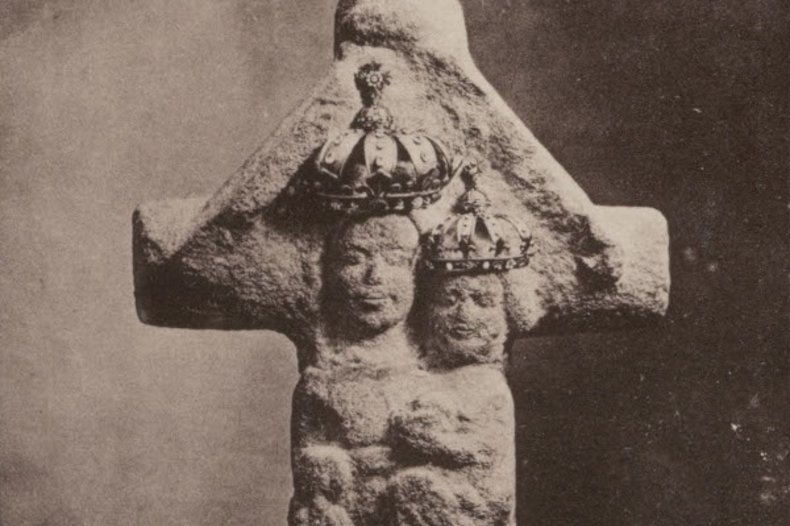
Statue of Notre-Dame de Nazareth from the church of Notre-Dame-de-Nazareth in Plancoët / © LO/wikimedia
Les raisons d'y croire :
- A thorough canonical investigation was launched in the same year as the apparition.
- A team of theologians was sent in, led by the vicar general of the Saint-Malo diocese, Monsignor de Harlay de Sancy (d. 1646).
- Numerous testimonies were collected in a 80-page reportwa by the court clerk.
- The cures were verified by doctors. There was no natural explanation for some of the cures, which involved serious conditions such as dropsy, cancer, deafness, etc.
- Mons. de Harlay de Sancy studied the whole case and recognised the supernatural nature of the events. By decree, he authorised worship at the site and provided religious services for pilgrims, first by Oratorians, then by Dominicans.
Synthèse :
The extraordinary phenomena began in May1644. Yvon Bertin's widow, Olive Blandin, from the village of la Massonnais, in Corseul, aged 66, was driving her flock near the Ruellan fountain. Four times around ten in the morning, she heard a plaintive voice. She looked around, but saw no one. A thought occurred to her: that her daughter, who had died recently, was suffering in purgatory and was asking for prayers. Without hesitation, she knelt down by the roadside and begged the Lord to have mercy on the soul of her poor child.
Olive Blandin returned to Plancoët and recounted what had happened to her. Immediately, people started sharing unusual stories. François Billy, a merchant living in Haut-Plancoët, recounted how, passing by the Ruellan fountain on July 26, 1643, the feast of Saint Anne, he had stopped to let his horse drink without its bridle when, all of a sudden, he heard a loud voice - a woman's voice - lamenting. A glance around him convinced him that he was alone on this corner of the road. He walked away, distraught, without having found the origin of the voice.
Nicolas Le Marchand, from Dinan, recounted that the previous year, in November 1642, as he was returning from a fair held in the town of Matignon, he noticed a similar phenomenon. As he passed by the Ruellan fountain at daybreak, he unharnessed his horse to water it, but he couldn't get it to drink. He pushed its head down to incline it towards the water and plunged its mouth into the stone basin, but to no avail: the animal refused and fell to its knees. Annoyed, his master gave him an angry lash. It was a pointless punishment! The animal didn't move, while a touching wail rose from the fountain, sending shivers through Nicolas Le Marchand's heart.
Discovery of the statue
People began to recall how a statue of the Virgin Mary was believed to have fallen into the Ruellan fountain many years before. That fountain was deep and muddy fountain with an abundance of aquatic plants. The three sons of a hardware merchant in Bas-Plancoët, respectively named Alain, 21, Jacques, 19, and Jean Faguet, 17, decided to find out for themselves. The day after the feast of the Holy Rosary, on Monday, October 3, 1644, Alain and Jacques began to dig, but after working until two or three in the afternoon, the elder became discouraged. More tenacious, the younger boy found the first piece of the statue. He called his brother back, and handed him the body of the statue. Jean soon joined them, and Jacques his two brothers the top part of the statue: the heads of the Virgin and the Child Jesus. Digging deeper, Jacques noticed the third piece at the bottom of the fountain: the pedestal (or base), which seemed too heavy to lift, so he left it in the basin. Together, the three brothers washed the two pieces they had removed from the water and placed them on the slope of a field, against an oak tree belonging to Sieur de Laudren Le Roy. At dawn the next day, ina spontaneous display of piety,pilgrims flocked to the humble statue to pray and bring offerings. Then, bowing with respect, they devoutly drank the clear water from the cleaned fountain, where Mary's smile seemed to be reflected. In a moving scene, a young girl took off a pretty ribbon she was wearing and placed it as an offering at the feet of the Blessed Virgin.
The grey granite statue is sculpted on both sides: one side represents Our Lord's descent from the Cross; the other, the Virgin Mother holding her son in her arms. Next to the Child Jesus is an engraved figure that is hard to identify - possibly Saint John the Evangelist.
The first miracles.
That same day, Guillaume Huet, a merchant who had been suffering from dropsy for six months and had been confined to bed since Pentecost, made a vow to the Blessed Virgin and promised to go to the Ruellan fountain to visit the statue that the Faguet brothers had found. The remedies provided by Picot, an apothecary in Dinan, had had no effect on him. Since the end of September, he hadn't even been able to get out of bed. As soon as he invoked the miraculous statue, he felt such relief that he got up straight away. Filled with gratitude, he returned to the statue the next day, walking joyfully and completely cured. There he met the three brothers near their miraculous find. Together they decided to build Mary a rustic chapel, made temporarily of planks.
Strange lights
The miraculous signs around the statue multiplied, starting with the light, attested to by hundreds of witnesses. One of them was a certain Jean Lhostellier, aged 38, who passed shortly after midnight in the rue de l'Abbaye, and climbed the hill towards Dinan. As he approached the simple chapel, a bright light appeared, similar to a burning torch. Then the light disappeared, leaving Lhostellier in a state of stupor. Nevertheless, he continued on his way, quite impressed by this vision. The next day, on his way back from Dinan, he passed the same place and saw only people kneeling piously before the statue.
Apparition
On 18 October 1644, the feast of Saint Luke the Evangelist, a small group left the heights of Créhen three hours before daylight. It included a ploughman, Yvon Merdrignac, a shoemaker, Jean Girard, Guillaume Bouexière, and his wife, Jeanne Besrée, from the village of La Chesnelaye, and a certain Yves Gillebert who had joined them with his daughter. They approached the chapel two hours before dawn, in the middle of the night. They were in for a surprise: in the middle of the road they saw a beautiful luminous lady dressed all in white. When they approached, the tall lady had disappeared and the road was deserted. The six of them knelt down in front of the granite statue and, after praying for a long time, they went into a hut on the other side of the road to have breakfast, sheltered from the morning air. As they ate, they saw a long flash of lightning shine above the holy image, without hearing any sound of thunder.
The pilgrimage
The news spread throughout the region, and popular devotion grew rapidly, as marvellous events multiplied around the recently discovered crossed-shaped statue. The number of pilgrims increased by the day. At first, there were as many as two or three hundred in a single day. Soon, as their numbers grew, it became more difficult to estimate. On any given day, there could be as many as two thousand. Father Julien Gévezé, rector of Corseul, reported all these events to his bishop, Mgr Achille du Harlay de Sancy, who then presided over the diocese of Saint-Malo, and asked him to define a course of action.
Canonical enquiry
The bishop decided to investigate these extraordinary events in depth, and set to work straight away. He set up a tribunal and sent it to the site to examine this cross of granite, broken into three pieces, bearing the images of the Virgin Mary and the Child Jesus on one side and the Descent from the Cross on the other, and to examine the witnesses to the extraordinary events and healings that had preceded, accompanied and followed the discovery of this statue. The commission of enquiry went to the site and scrupulously noted the number of ex-votos which, placed at the foot of the statue, bore witness to graces received, including a large number of healings: "Sixty-four lighted white and yellow wax candles; one hundred and fifty rosaries hanging from the walls; two gold crosses; three silver crosses; earrings; wax representations of arms and legs, and the bodies of men, women and children; crutches; two paintings of the Blessed Virgin; an alabaster statue of Saint Catherine; a bell; and even objects such as white earthenware pots, a pewter dish, a mirror, a grey hat, two cloth tablecloths, four napkins, headdresses and men's shirt collars."
Popular devotion has not abated since that time.
In 2015, Arnaud Dumouch, who holds a degree in religious studies, and Father Henri Ganty founded the Institut Docteur Angélique, which offers a complete online training programme in Catholic philosophy and theology, in line with Benedict XVI's hermeneutic of continuity.
Au-delà des raisons d'y croire :
Critics are surprised by the unusual phenomena around this apparition: moans that seem to come from beyond the grave, the appearance of a white lady, naïve ex-votos offerings, etc. All this is reminiscent of certain traditional Breton legends about the dead. It is true that Celtic Christianity was dominant then in Brittany as it was in Ireland, and celtic culture could have influenced the story, theoretically. But the investigation and the testimonies of dozens of witnesses, who did not know each other, is solid and lends credence to the truth of the reported miracles. The number of cures, which cannot be doubted, shows that the Blessed Virgin wished to appear in accordance with the prevailing sensibilities of 17th-century Brittany.
Aller plus loin :
Video account of the apparition by Arnaud Dumouch (narrated in French): The apparition of Our Lady of Nazareth in Plancoët
En savoir plus :- "History of Notre Dame de Nazareth de Plancoët by Father A. Lemasson , with an introduction by Mgr A. du Bois de La Villerabel. Lemasson, with an introduction by Mgr A. du Bois de La Villerabel ".
- Article from the Marian Encyclopaedia "Plancoët: Notre Dame de Nazareth".
- René Laurentin and Patrick Sbalchiero, "Plancoët", Dictionnaire encyclopédique des apparitions de la Vierge, Paris, Fayard, 2007.
LES RAISONS DE LA SEMAINE
Marie ,
Les apparitions et interventions mariales ,
Des miracles étonnants
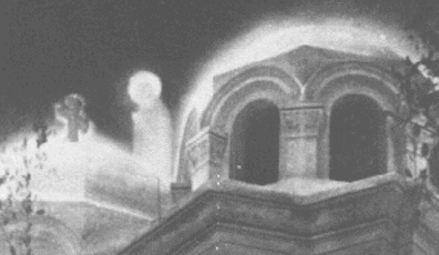
Zeitoun : ils sont des centaines de milliers à avoir vu la Vierge en Égypte
Les apparitions et interventions mariales
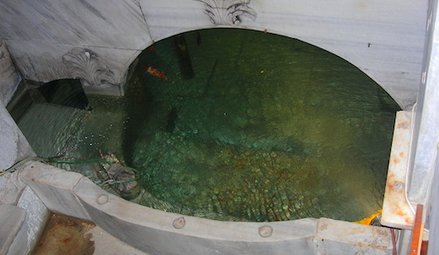
La source vivifiante de Constantinople
Les apparitions et interventions mariales ,
Guérisons miraculeuses
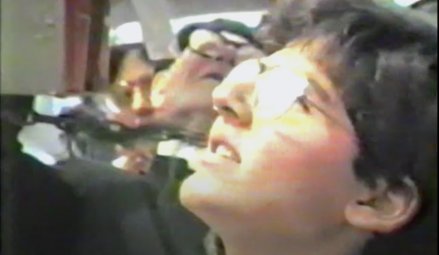
La Vierge Marie guérit un adolescent, avant de lui apparaître des dizaines de fois
Les apparitions et interventions mariales ,
Histoires providentielles
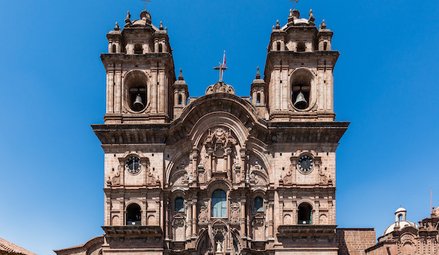
La Vierge Marie délivre les chrétiens de la cité de Cuzco
Les apparitions et interventions mariales ,
Guérisons miraculeuses
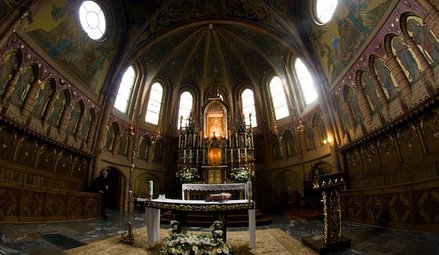
Les apparitions de Gietrzwald en secours à une minorité persécutée
Les apparitions et interventions mariales
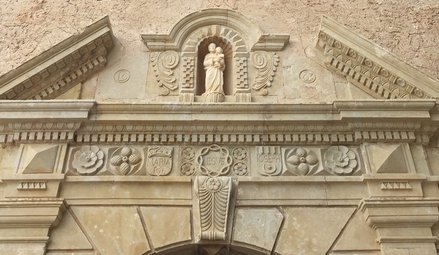
Les apparitions de saint Joseph au Bessillon
Les apparitions et interventions mariales ,
Stigmates
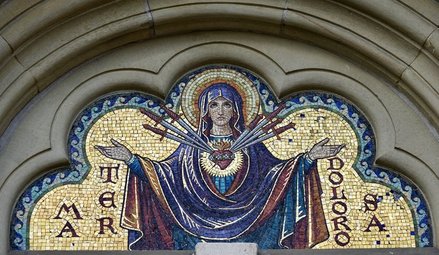
Luz Amparo et les apparitions de l’Escurial
Les apparitions et interventions mariales
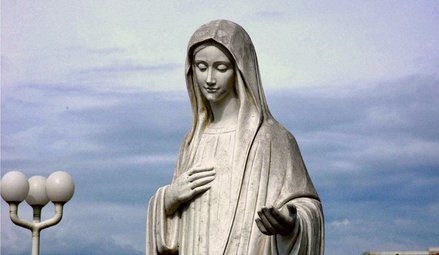
Les extraordinaires apparitions de Medjugorje et leur impact mondial
Les apparitions et interventions mariales
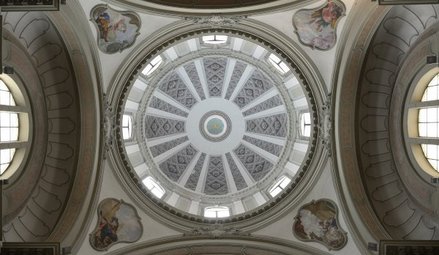
La Rosa Mystica de Montichiari
Les apparitions et interventions mariales
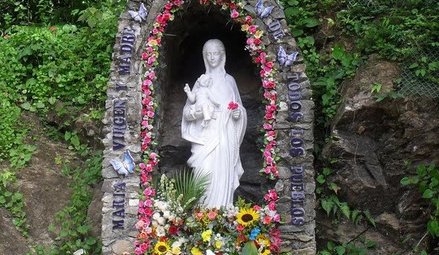
Maria Esperanza et Notre Dame Réconciliatrice des Peuples
Les apparitions et interventions mariales
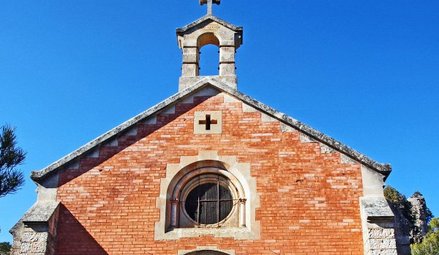
Cotignac, premières apparitions modernes de l’histoire
Les apparitions et interventions mariales ,
Guérisons miraculeuses
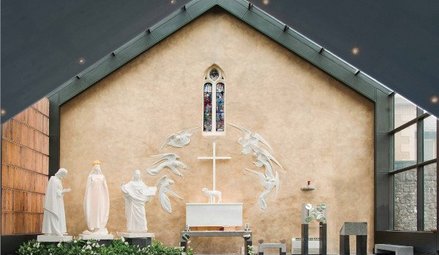
L’apparition silencieuse de Knock Mhuire
Les apparitions et interventions mariales ,
Histoires providentielles
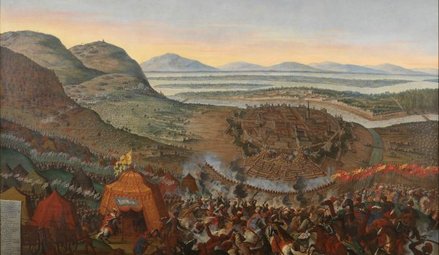
Le Saint Nom de Marie et la victoire décisive de Vienne
Les apparitions et interventions mariales ,
Guérisons miraculeuses
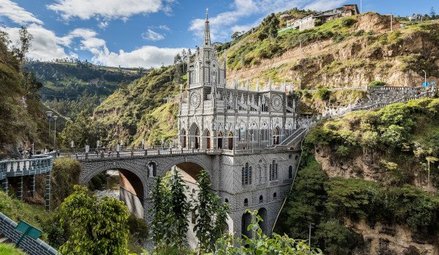
Le ciel touche la terre en Colombie : Las Lajas
Les apparitions et interventions mariales
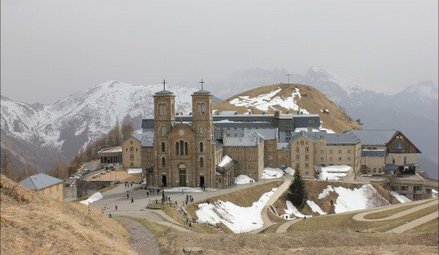
A la Salette, Marie pleure près des bergers
Les apparitions et interventions mariales
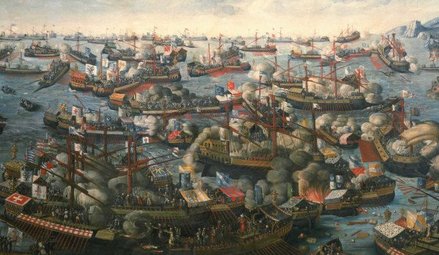
La victoire de Lépante et la fête de Notre-Dame du Rosaire
Les apparitions et interventions mariales
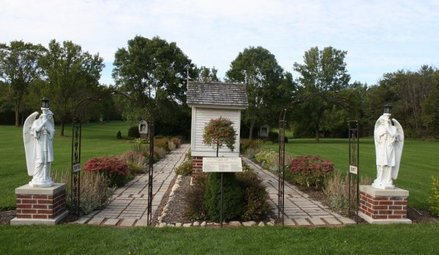
La Vierge Marie dans le Wisconsin : « Heureux ceux qui croient sans avoir vu »
Les apparitions et interventions mariales
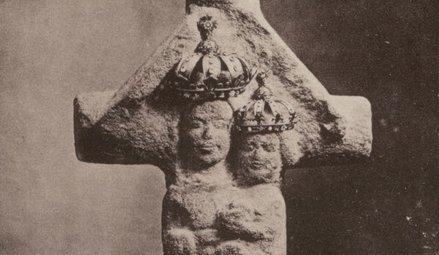
Notre Dame de Nazareth à Plancoët
Les apparitions et interventions mariales ,
Histoires providentielles
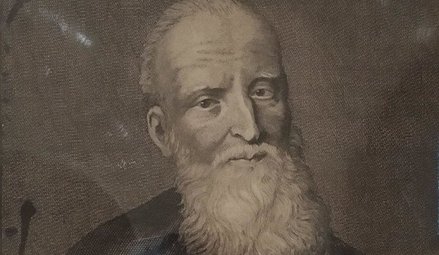
Les apparitions au frère Fiacre
Les apparitions et interventions mariales
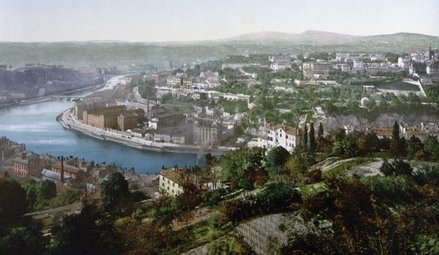
Marie « Mère abandonnée » apparaît dans un quartier populaire de Lyon
Les apparitions et interventions mariales
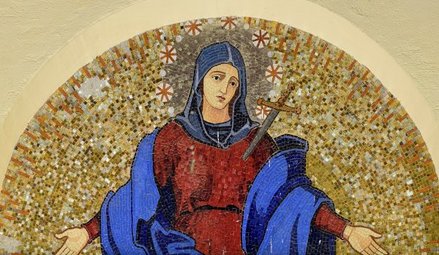
La Vierge Marie prophétise les massacres au Rwanda
Les apparitions et interventions mariales
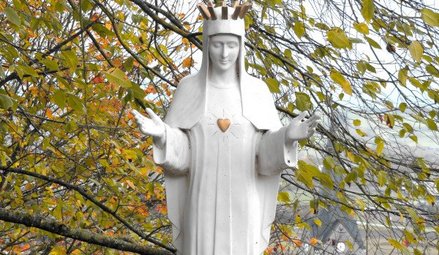
Les trente-trois apparitions de la Vierge Marie à Beauraing
Les apparitions et interventions mariales
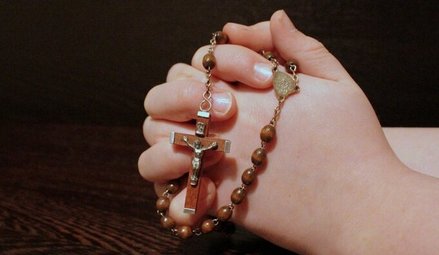
« Une Belle Dame » vient au secours de la France à l'Île Bouchard
Les apparitions et interventions mariales ,
Histoires providentielles
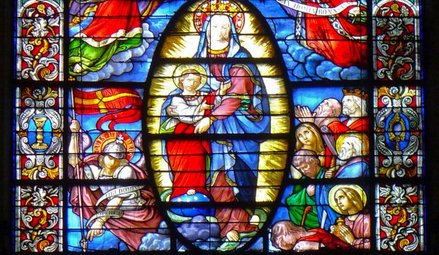
« Consacre ta paroisse au cœur immaculée de Marie »
Les apparitions et interventions mariales
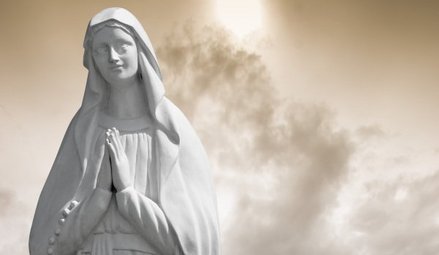
Apparitions et message de la Vierge Marie à Myrna
Les apparitions et interventions mariales ,
Guérisons miraculeuses
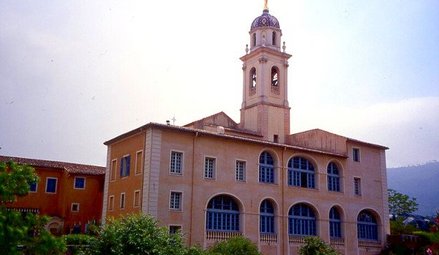
La Madone de Laghet
Les apparitions et interventions mariales
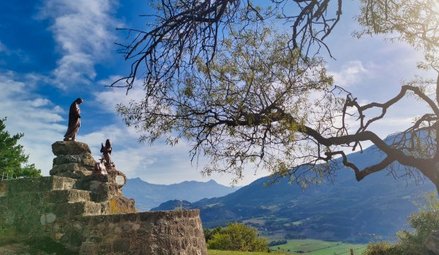
Les confidences du Ciel à la bergère du Laus
Les apparitions et interventions mariales
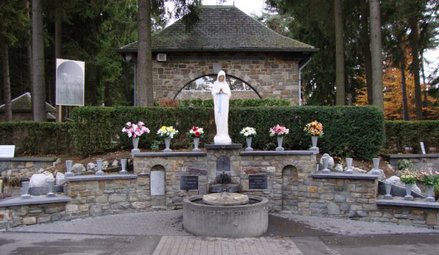
La « Vierge des pauvres » apparaît à huit reprises à Banneux
Les apparitions et interventions mariales ,
Histoires providentielles
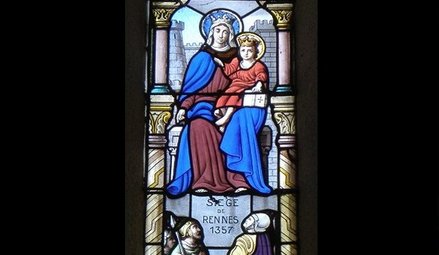
Notre Dame des Vertus sauve la ville de Rennes
Les apparitions et interventions mariales
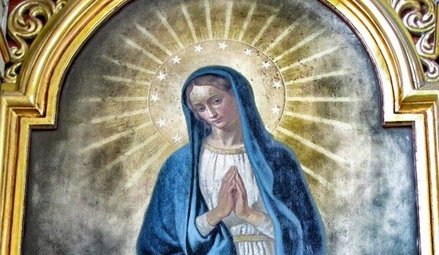
Marie fait arrêter l’épidémie de peste au mont Berico
Les apparitions et interventions mariales
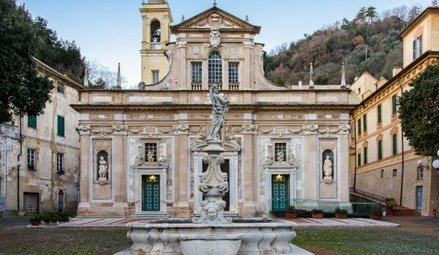
Savone, 1536 : la naissance d’un sanctuaire
Les apparitions et interventions mariales
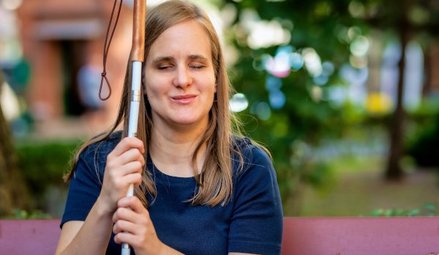
Seuca : l’appel de la « Reine de lumière » en Roumanie
Marie ,
Les apparitions et interventions mariales ,
Des miracles étonnants

Zeitoun: cientos de miles de personas han visto a la Virgen María en Egipto
Les apparitions et interventions mariales

La fuente vivificante de Constantinopla
Marie ,
Les apparitions et interventions mariales ,
Des miracles étonnants

In the 1960s, the Virgin Mary appeared in Egypt before hundreds of thousands of witnesses
Les apparitions et interventions mariales

The Life-giving Font of Constantinople
Les apparitions et interventions mariales ,
Guérisons miraculeuses

The Virgin Mary heals a teenager, then appears to him dozens of times
Les apparitions et interventions mariales ,
Guérisons miraculeuses
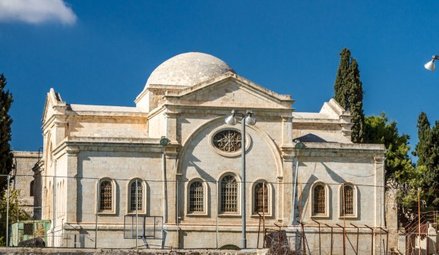
Zeitoun, un miracle de deux années
Les apparitions et interventions mariales
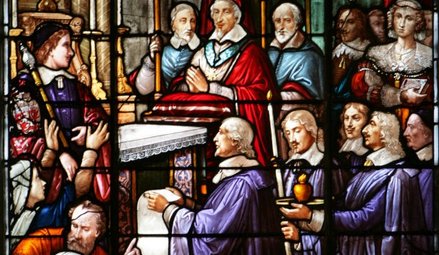
Le « vœu des échevins », ou la dévotion mariale des Lyonnais
Les apparitions et interventions mariales ,
Guérisons miraculeuses

La Virgen María cura a un adolescente y se le aparece decenas de veces
Les apparitions et interventions mariales ,
Histoires providentielles

La Virgen María salva a los cristianos de la ciudad de Cuzco
Les apparitions et interventions mariales
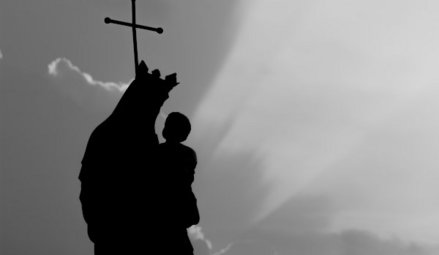
La Vierge apparaît et prophétise en Ukraine depuis le XIXe siècle
Marie ,
Les apparitions et interventions mariales ,
Des miracles étonnants

Zeitoun: centinaia di migliaia di persone hanno visto la Vergine Maria in Egitto
Les apparitions et interventions mariales

La sorgente vivificante di Costantinopoli
Les apparitions et interventions mariales
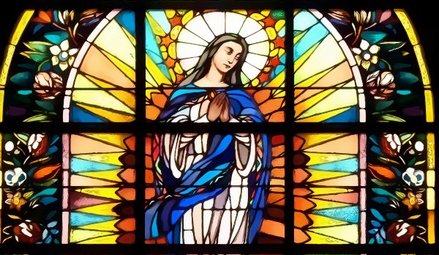
Marie répond au vœu des Polonais
Les apparitions et interventions mariales ,
Guérisons miraculeuses

La Vergine Maria guarisce un adolescente e poi gli appare decine di volte
Les apparitions et interventions mariales ,
Histoires providentielles

The Virgin Mary delivers besieged Christians in Cusco, Peru
Les apparitions et interventions mariales
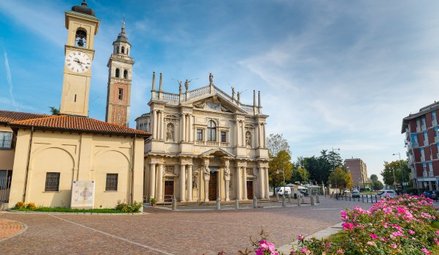
Notre Dame des miracles guérit un paralytique à Saronno
Les apparitions et interventions mariales ,
Guérisons miraculeuses

Las apariciones de Gietrzwald en auxilio de una minoría perseguida en Polonia
Les apparitions et interventions mariales
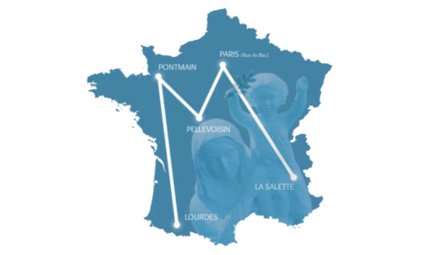
Le « M » que Marie a tracé sur la France sera rappelé le 26 mai prochain
Les apparitions et interventions mariales ,
Histoires providentielles

La Vergine Maria libera i cristiani della città di Cuzco
Les apparitions et interventions mariales

Las apariciones de San José en el monte Bessillon
Les apparitions et interventions mariales ,
Guérisons miraculeuses

Gietrzwald apparitions: heavenly help to a persecuted minority
Les apparitions et interventions mariales

Saint Joseph’s apparitions in Cotignac, France (1660)
Les apparitions et interventions mariales ,
Stigmates

Luz Amparo and the El Escorial apparitions
Les apparitions et interventions mariales

The extraordinary apparitions of Medjugorje and their worldwide impact
Les apparitions et interventions mariales ,
Stigmates

Luz Amparo y las apariciones de El Escorial
Les apparitions et interventions mariales

Las extraordinarias apariciones de Medjugorje y su repercusión mundial
Les apparitions et interventions mariales ,
Guérisons miraculeuses

Le apparizioni di Gietrzwald in aiuto di una minoranza perseguitata
Les apparitions et interventions mariales

Le apparizioni di San Giuseppe sul monte Bessillon
Les apparitions et interventions mariales

Our Lady "Rosa Mystica" of Montichiari
Les apparitions et interventions mariales ,
Stigmates

Luz Amparo e le apparizioni di El Escorial
Les apparitions et interventions mariales
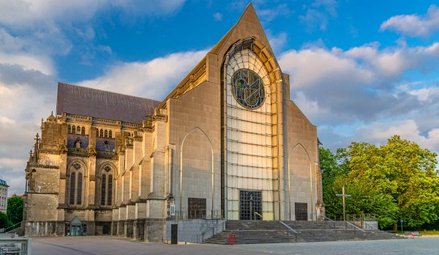
Apparition, prophétie et guérisons de la Vierge Marie dans le Nord de la France
Les apparitions et interventions mariales

La Rosa Mística de Montichiari
Les apparitions et interventions mariales

Le straordinarie apparizioni di Medjugorje e il loro impatto mondiale
Les apparitions et interventions mariales

María Esperanza y Nuestra Señora Reconciliadora de todos los Pueblos
Les apparitions et interventions mariales

Cotignac, las primeras apariciones modernas de la historia
Les apparitions et interventions mariales

La "Rosa Mistica" di Montichiari
Les apparitions et interventions mariales ,
Les anges et leurs manifestations
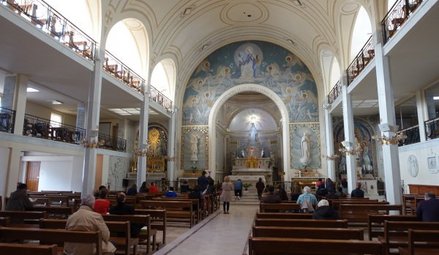
La nuit extraordinaire de sœur Labouré
Les apparitions et interventions mariales

Maria Esperanza and Our Lady, Reconciler of Peoples
Les apparitions et interventions mariales

Cotignac: the first apparitions of the Modern Era (1519)
Les apparitions et interventions mariales

Maria Esperanza e Maria Vergine e Madre, Riconciliatrice dei Popoli
Les apparitions et interventions mariales ,
Guérisons miraculeuses

The silent apparition of Knock Mhuire in Ireland (1879)
Les apparitions et interventions mariales

Cotignac, le prime apparizioni moderne della storia
Les apparitions et interventions mariales ,
Histoires providentielles
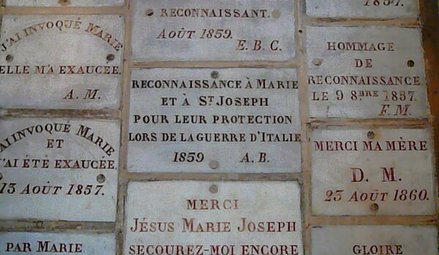
Les 37 000 prières exaucées, gravées dans le marbre d’une basilique parisienne
Les apparitions et interventions mariales

Notre Dame des Neiges au secours des soldats catholiques
Les apparitions et interventions mariales ,
Guérisons miraculeuses

La silenciosa aparición de Knock Mhuire
Les apparitions et interventions mariales ,
Guérisons miraculeuses

L'apparizione silenziosa di Knock Mhuire
Les apparitions et interventions mariales ,
Histoires providentielles

El Santo Nombre de María y la victoria decisiva en Viena
Les apparitions et interventions mariales ,
Guérisons miraculeuses

El cielo toca la tierra en Colombia: Las Lajas
Les apparitions et interventions mariales

En La Salette, María llora junto a los pastores
Les apparitions et interventions mariales ,
Histoires providentielles

The Holy Name of Mary and the major victory of Vienna (1683)
Les apparitions et interventions mariales ,
Guérisons miraculeuses

Heaven and earth meet in Colombia: the Las Lajas shrine (1754)
Les apparitions et interventions mariales

At La Salette, Mary wept in front of the shepherds
Les apparitions et interventions mariales
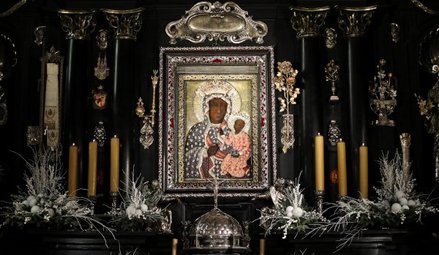
Czestochowa, l’âme de la Pologne
Les apparitions et interventions mariales ,
Histoires providentielles

Il Santo Nome di Maria e la vittoria decisiva a Vienna
Les apparitions et interventions mariales ,
Guérisons miraculeuses

Il cielo tocca la terra in Colombia: Las Lajas
Les apparitions et interventions mariales

Notre Dame de l’Agenouillée
Les apparitions et interventions mariales

A La Salette, Maria piange davanti ai pastori
Les apparitions et interventions mariales

The victory of Lepanto and the feast of Our Lady of the Rosary
Les apparitions et interventions mariales

Our Lady of Champion, Wisconsin: the first and only approved apparition of Mary in the US (1859)
Les apparitions et interventions mariales

La victoria de Lepanto y la fiesta de Nuestra Señora del Rosario
Les apparitions et interventions mariales

La Virgen María en Wisconsin: "Bienaventurados los que creen sin haber visto"
Les apparitions et interventions mariales

Nuestra Señora de Nazaret en Plancoët
Les apparitions et interventions mariales

Notre Dame de Nazareth in Plancoët
Les apparitions et interventions mariales

La vittoria di Lepanto e la festa della Madonna del Rosario
Les apparitions et interventions mariales

La Vergine Maria nel Wisconsin: "Beati coloro che credono pur non avendo visto"
Les apparitions et interventions mariales ,
Histoires providentielles

The apparitions to Brother Fiacre
Les apparitions et interventions mariales ,
Histoires providentielles

Apariciones al Hermano Fiacre
Les apparitions et interventions mariales

María "Madre Abandonada" aparece en un barrio obrero de Lyon
Les apparitions et interventions mariales

Mary "Abandoned Mother" appears in a working-class district of Lyon, France
Les apparitions et interventions mariales

Nostra Signora di Nazaret a Plancoët
Les apparitions et interventions mariales ,
Histoires providentielles

Le apparizioni a fratel Fiacre
Les apparitions et interventions mariales

Maria "Madre abbandonata" appare in un quartiere operaio di Lione
Les apparitions et interventions mariales

The Virgin Mary prophesied the 1994 Rwandan genocide
Les apparitions et interventions mariales
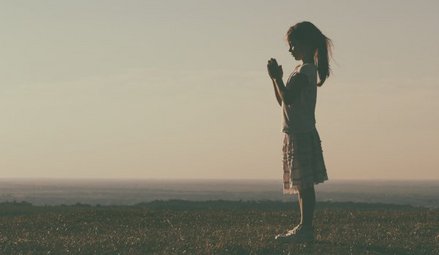
Face à la Gestapo, elles soutiennent qu’elles ont vu la Vierge Marie
Les apparitions et interventions mariales

The thirty-three apparitions of the Virgin Mary in Beauraing
Les apparitions et interventions mariales

La Virgen María profetiza masacres en Ruanda
Les apparitions et interventions mariales

Las treinta y tres apariciones de la Virgen María en Beauraing
Les apparitions et interventions mariales

"Una Bella Señora" acude al rescate de Francia en Île Bouchard
Les apparitions et interventions mariales ,
Histoires providentielles

"Consagra tu parroquia al Inmaculado Corazón de María".
Les apparitions et interventions mariales

The Virgin Mary comes to France's rescue by appearing at L'Île-Bouchard
Les apparitions et interventions mariales ,
Histoires providentielles

"Consecrate your parish to the Immaculate Heart of Mary".
Les apparitions et interventions mariales
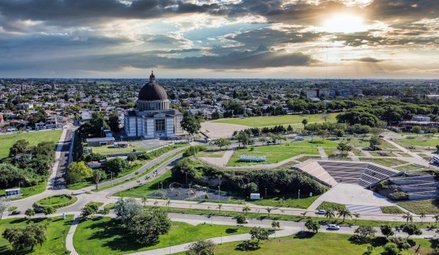
San Nicolas : lorsque Marie visite l’Argentine
Les apparitions et interventions mariales

Our Lady of Soufanieh's apparition and messages to Myrna Nazzour
Les apparitions et interventions mariales

La Vergine Maria profetizza i massacri in Ruanda
Les apparitions et interventions mariales

Le trentatré apparizioni della Vergine Maria a Beauraing
Les apparitions et interventions mariales

Apariciones y mensaje de la Virgen María en Myrna
Les apparitions et interventions mariales ,
Guérisons miraculeuses

La Madonna de Laghet
Les apparitions et interventions mariales ,
Guérisons miraculeuses

Our Lady of Laghet
Les apparitions et interventions mariales

"Une Belle Dame" viene in soccorso della Francia sull'Île Bouchard
Les apparitions et interventions mariales

Heaven confides in a shepherdess of Le Laus
Les apparitions et interventions mariales ,
Histoires providentielles

"Consacra la tua parrocchia al Cuore Immacolato di Maria"
Les apparitions et interventions mariales

Le apparizioni e il messaggio della Vergine Maria a Myrna
Les apparitions et interventions mariales ,
Guérisons miraculeuses

La Madonna di Laghet
Les apparitions et interventions mariales
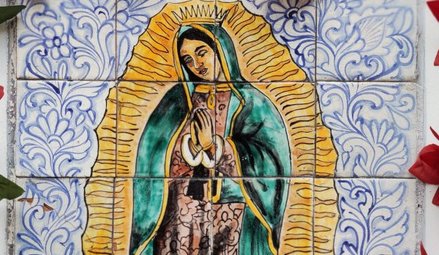
La Vierge Marie porte la Bonne Nouvelle aux Indiens du Mexique
Les apparitions et interventions mariales

Las confidencias del Cielo a la pastora de Le Laus
Les apparitions et interventions mariales

"Our Lady of the Poor" appears eight times in Banneux
Les apparitions et interventions mariales

Le confidenze del Cielo alla pastorella di Laus
Les apparitions et interventions mariales

La "Virgen de los Pobres" se aparece ocho veces en Banneux
Les apparitions et interventions mariales
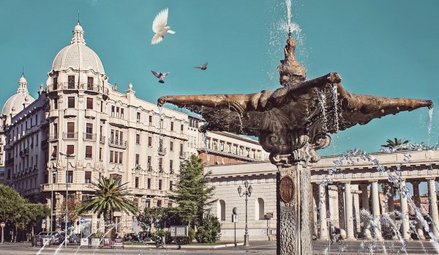
Plus de mille ans que Marie agit pour les hommes à Foggia
Les apparitions et interventions mariales
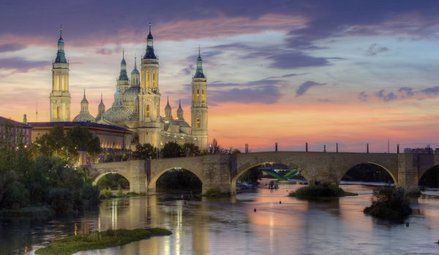
Notre Dame du Pilier vient redonner courage à l’apôtre Jacques à Saragosse
Les apparitions et interventions mariales

La "Vergine dei poveri" appare otto volte a Banneux
Les apparitions et interventions mariales ,
Histoires providentielles

Our Lady of Virtues saves the city of Rennes in Brittany
Les apparitions et interventions mariales ,
Histoires providentielles

Nuestra Señora de las Virtudes salva la ciudad de Rennes
Les apparitions et interventions mariales ,
Histoires providentielles

Nostra Signora delle Virtù salva la città di Rennes
Les apparitions et interventions mariales
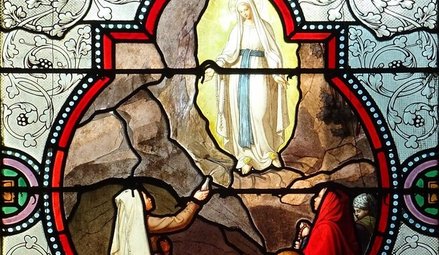
Les apparitions de Lourdes, d’authentiques expériences surnaturelles
Les apparitions et interventions mariales

Mary stops the plague epidemic at Mount Berico
Les apparitions et interventions mariales
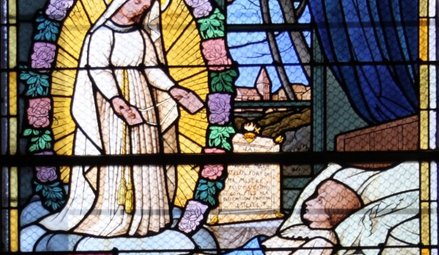
Les quinze apparitions de Notre Dame à Pellevoisin
Les apparitions et interventions mariales

María detiene la epidemia de peste en el Monte Berico
Les apparitions et interventions mariales

Savona: supernatural origin of the devotion to Our Lady of Mercy
Les apparitions et interventions mariales

Savona, 1536: el nacimiento de un santuario
Les apparitions et interventions mariales

Seuca: la llamada de la "Reina de la Luz" en Rumanía
Les apparitions et interventions mariales

Seuca, Romania: apparitions and pleas of the Virgin Mary, "Queen of Light"
Les apparitions et interventions mariales

Maria ferma l'epidemia di peste sul Monte Berico
Les apparitions et interventions mariales ,
Guérisons miraculeuses

Zeitoun, un milagro que dura dos años
Les apparitions et interventions mariales

El "voto de los concejales" o la devoción mariana de los lioneses
Les apparitions et interventions mariales

Savona, 1536: la nascita di un santuario
Les apparitions et interventions mariales

Seuca: l'appello della "Regina della Luce" in Romania
Les apparitions et interventions mariales ,
Guérisons miraculeuses

Zeitoun, a two-year miracle
Les apparitions et interventions mariales

The "Aldermen's Vow", or the Marian devotion of the people of Lyon
Les apparitions et interventions mariales

Notre-Dame de Treize-Pierres, en Aveyron
Les apparitions et interventions mariales ,
Guérisons miraculeuses

Zeitoun, un miracolo di due anni
Les apparitions et interventions mariales

Il "voto degli assessori", ovvero la devozione mariana del popolo lionese
Les apparitions et interventions mariales

A series of Marian apparitions and prophetic messages in Ukraine since the 19th century
Les apparitions et interventions mariales

La Virgen se aparece y profetiza en Ucrania desde el siglo XIX
Les apparitions et interventions mariales

María responde a los votos de los polacos
Les apparitions et interventions mariales

La Virgen de los Milagros cura a un paralítico en Saronno
Les apparitions et interventions mariales

La "M" que Marie trazó sobre Francia será recordada el 26 de mayo
Les apparitions et interventions mariales

Mary responds to the Vows of the Polish Nation
Les apparitions et interventions mariales

Our Lady of Miracles heals a paralytic in Saronno
Les apparitions et interventions mariales

La Madonna appare e profetizza in Ucraina dal XIX secolo.
Les apparitions et interventions mariales

The five Marian apparitions that traced an "M" over France, and its new pilgrimage route
Les apparitions et interventions mariales
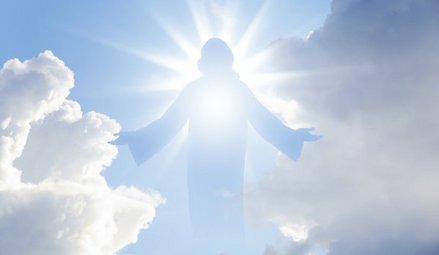
Cuapa : la Vierge est en Équateur
Les apparitions et interventions mariales








